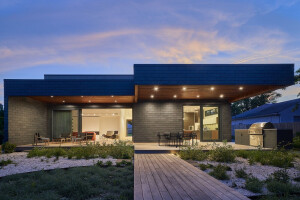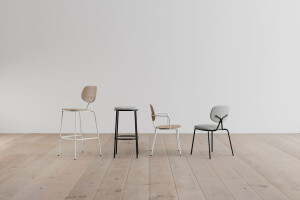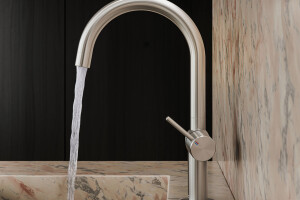The building is located in the Gamboa neighborhood, in the Port Zone of Rio de Janeiro, in an area preserved by the Rio Heritage Institute. The project proposes the restoration of the original external facades, maintaining their historical relevance.

With the interior demolition almost complete, the occupation remains mixed-use – commercial establishment on the ground floor and residences on the upper floor – and both benefit from the high ceilings through the mezzanines.
The Asfalto gallery opens the ground floor of the Gamboa building. The works of art are displayed in two main rooms, connected by an arched portico, original to the building, now peeling and with its solid bricks exposed, also revealing the pre-existing layers of paint.

Some internal elements were preserved to recall the construction process, such as the markings on the wall that divided the shops; the arches and the door made of reclaimed wood that gives access to the external area – a breath of fresh air in the middle of the built area – revealing the demarcation of the old bathrooms through the blue tile coverings.

The space receives natural lighting through a series of openings that make up the façade – which become shop windows – and is reinforced by suspended gutters with spotlights that keep the focus on the works. Hatch-shaped frames were designed to light the mezzanine, which extends to the building's entrance hall, which gives access to the apartments on the upper floor.

The contemporary interventions are mostly materialized through the structural design: metal beams and steel deck slab, with emphasis on the round exposed concrete pillar, which supports the mezzanine by means of the beam being fixed to an iron plate clamp. The internal façade, visible from the external area of the gallery, emphasizes the simplicity of the form, with new planes and openings that reinforce the lines already established in the existing design of the building.






























